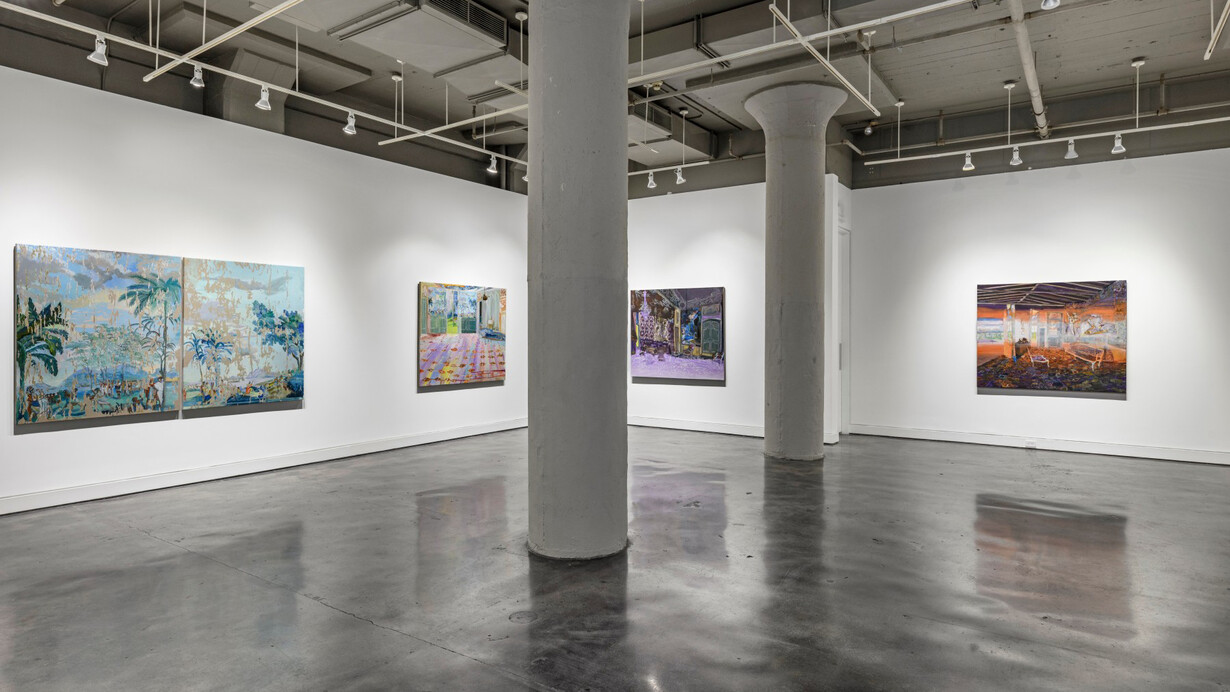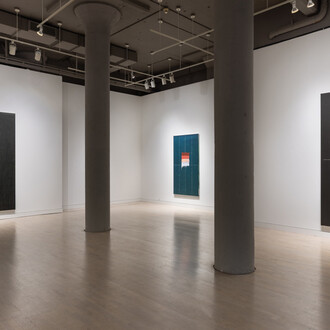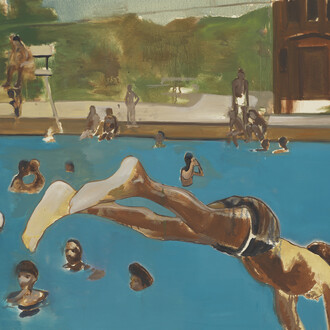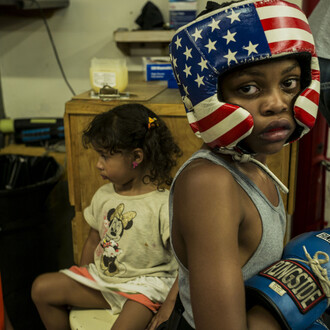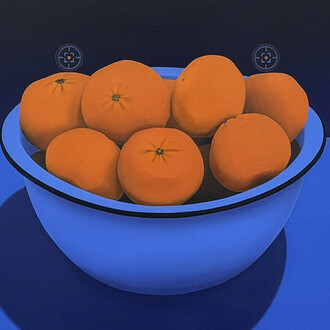Locks Gallery is pleased to present An absolute reciprocity of adaptation, an exhibition of new and recent paintings by Jane Irish (b. 1955). This marks the artist’s tenth solo exhibition with the gallery.
Excavating traumas of war and colonialism and embedding these histories into elaborate architectural settings, Irish’s disorienting scenes are layered with multiple visual narratives. Of this new body of work, the artist says:
Painting representationally or figuratively can be an act of imagination, but entails a code of truth, especially of the interior… The depictions of colonialism and the luxury items in French chateaus, which are often my subject matters, have an overt or covert connection to world systems of exploitation, including especially French involvement in Indochina...I try to exploit a certain doubleness: a harsh critique coexisting with the optimism of political prefiguration.
Foregrounded by prefigurative politics—an activist approach to ideating a future society—her work analyzes the roots of Western painting and exposes its violent remnants. Within the title, “An Absolute Reciprocity of Adaptation”, she reinterprets the concept of symbiosis drawn from Edgar Allan Poe’s epic poem Eureka. Focusing on a reciprocal adaptation of ideas and mediums, Irish understands how these relations produce a “prefiguration of peace.” Her persistent interest in the cultural memory of the American War in Vietnam reappears in these new works, including references to the anti-war group Vietnam Veterans Against The War (VVAW), which the artist has worked with for decades. In a large painting on bamboo paper titled Our testimony (2025), she embosses the VVAW preamble from a 1971 U.S. Congressional record atop an ornately decorated living room. In another painting titled Agent orange (2025), Irish calls to mind the pollutant used in herbicidal warfare programs with a muddy, darkened palette, while mutating, floating apparitions haunt the room and her 2021 painting Phosphorous hangs on the wall. Of the painting, Irish says, “I emphasize the violence in the room’s decor. With a breaking heart I ask, ‘Why wouldn’t we repeat and preserve the abuse and killing since we idolize our lives around these acts?’”
Meta references continue in Return (2025), where she transforms her series of colonial scenes titled Decay puits sauvage (2025) into a phantasmic wallpaper. Paintings of the decaying wall are shown alongside the semi-fictionalized setting in Return, signaling a spiral of meaning and “coevolution.” Juxtaposing images of colonial violence with the indigenous Vietnamese cloud flooring, Irish’s room becomes both contemplative and confrontational.
Also on view is a large-scale study for Irish’s Renaissance-style ceiling painting titled Cosmos beyond atrocity (2024), which was commissioned for the new building of the Princeton University Art Museum. Mounting the study as a wallpaper and hanging the drawings in front, the installation presents Irish’s adaptive process to illuminate the layered temporalities and spatial collisions.
